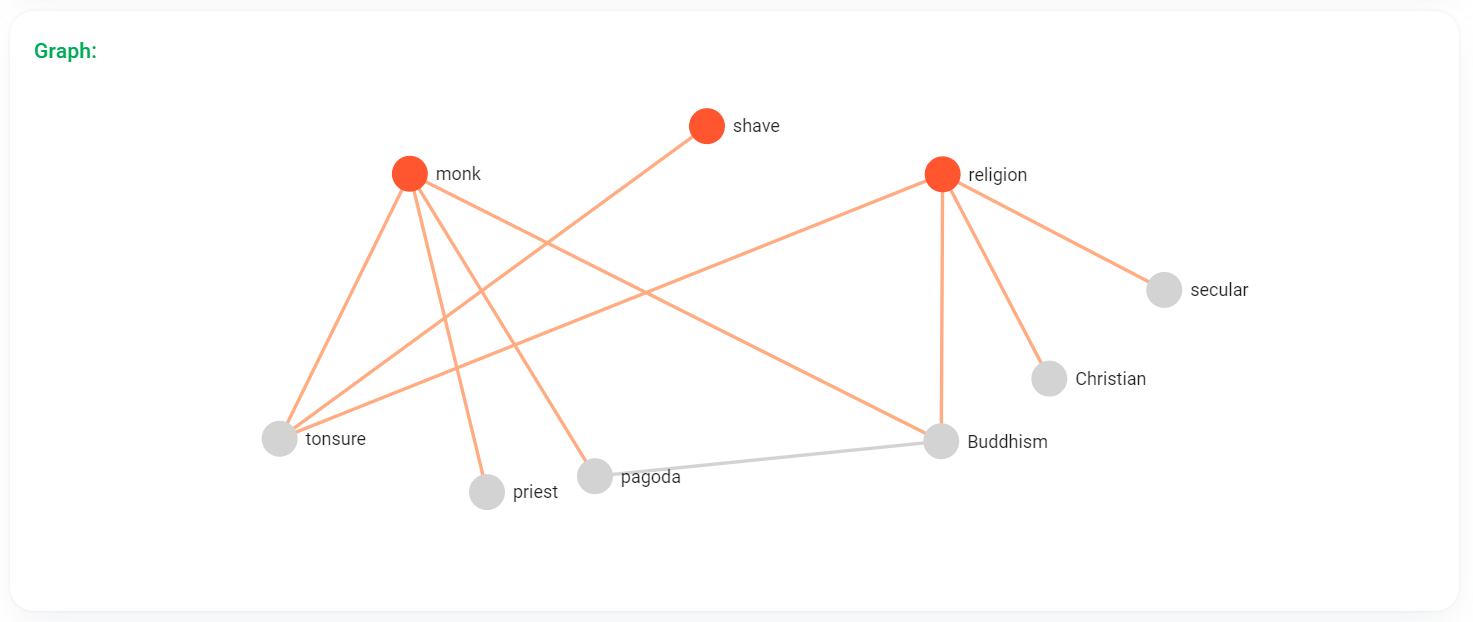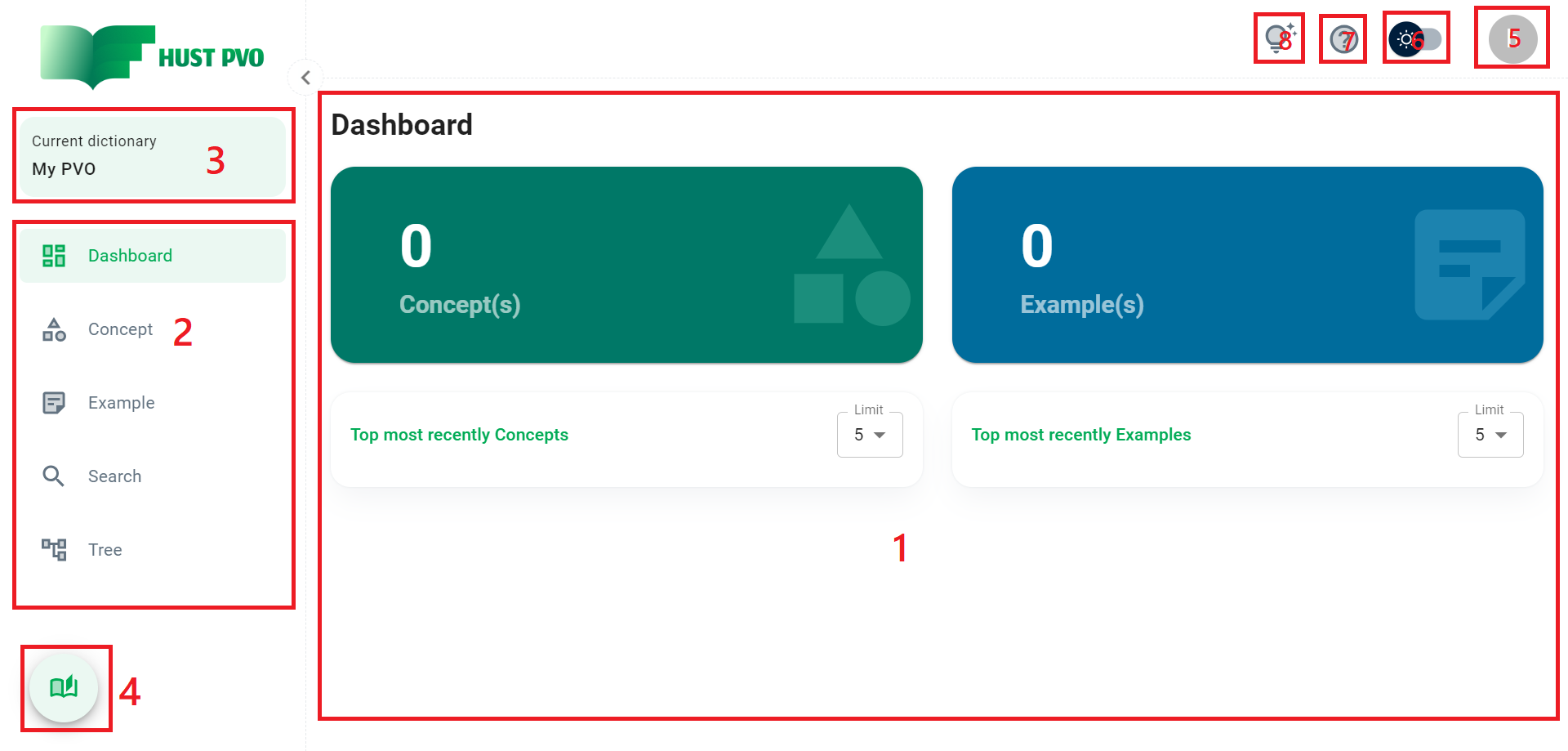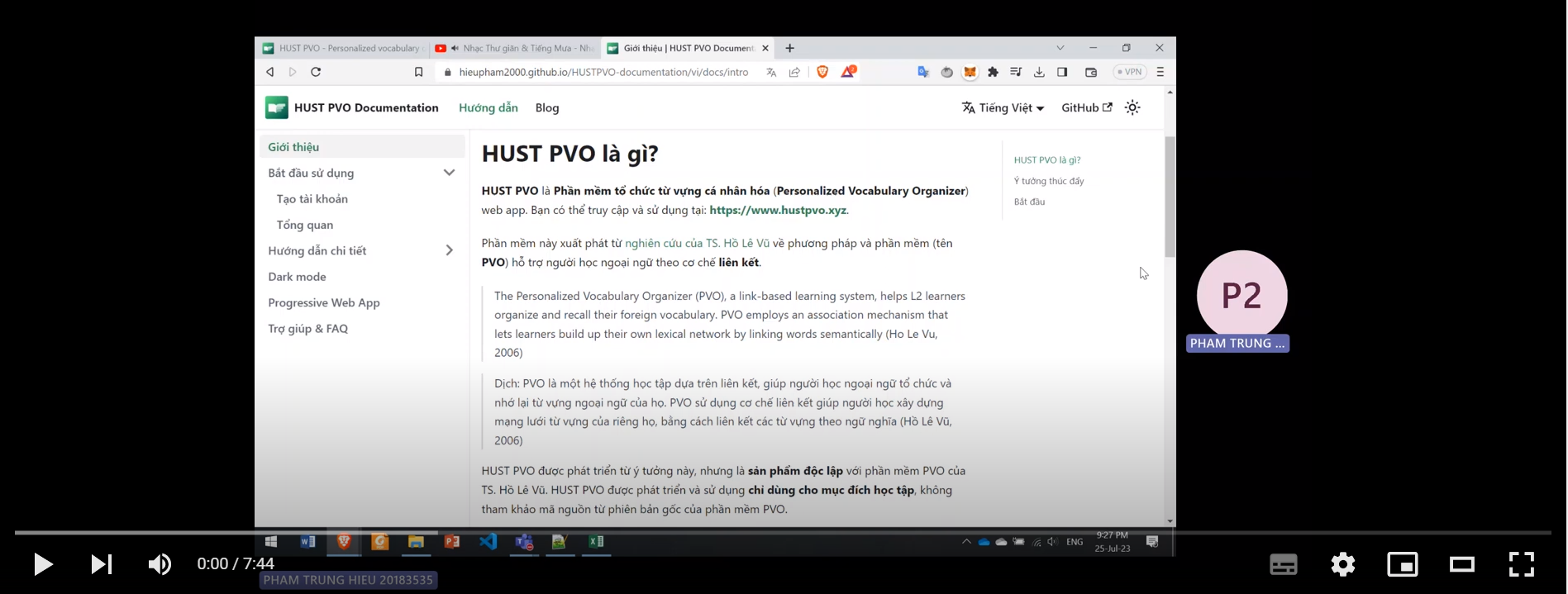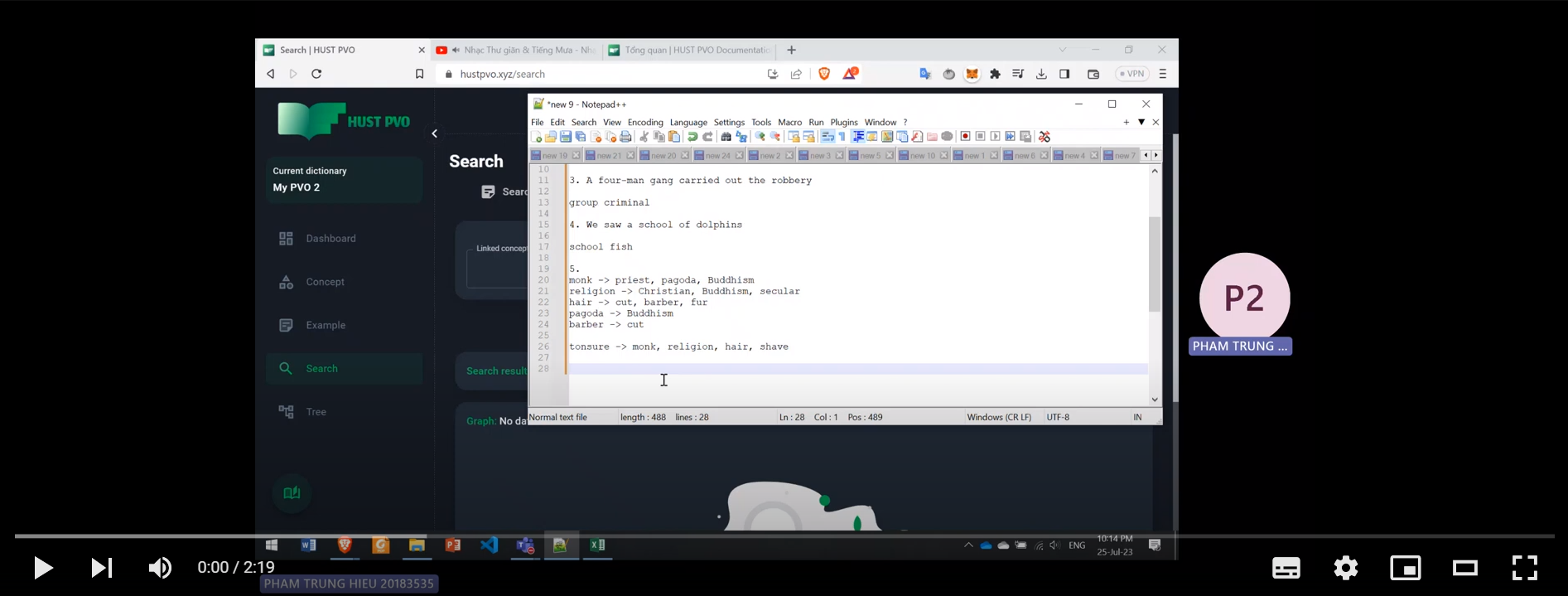Overview
This section introduces the core concepts and features that HUST PVO provides.
Core concepts
There are 3 core concepts of HUST PVO: Concept, Example and Dictionary.
Concept here is a word, a phrase or a group of words, used to represent a certain meaning. For example, a single word like free, freedom, hero,... a phrase like look after,... a group of words like reason-cause,...
Example here is a phrase, a sentence or a paragraph describing how to use vocabulary with a specific meaning. Example will have corresponding tone, mode, register, nuance and dialect properties to determine the context to use. For example, shake a leg is an example where the tone is informal, nuance is old-fashioned, and the mode is spoken.
Dictionary is where concepts and examples are stored. One user account can create multiple dictionaries for different purposes. For example, user A creates 1 dictionary to store communication vocabulary and another dictionary for IELTS exam preparation.
HUST PVO is a link-based learning system that helps learners learn vocabulary by association mechanism. Therefore, HUST PVO allows users to create two types of semantic association:
Link between concept (Association, Type of. Default is No link).
Link between example and concept (Idiom, Nominal, Agent, Patient, Action, Described by, Describing, Other phrase. Default is No link).
Creating appropriate associations helps to increase vocabulary recall, increase efficiency in learning and using vocabulary.
An example of linking concept and results when retrieving on HUST PVO:

Features
This is the main layout of HUST PVO:

- Main work area
- Sidebar: Dashboard, Concept, Example, Search, Tree
- Dictionaries
- View all concepts in current dictionary
- Account settings
- Toggle dark mode
- Help & FAQs
- Utility: Translate, Text to speech, Look up
Getting started
- Video: Getting started - Thêm example
- Video: Getting started - Tìm kiếm concept theo liên kết
What's next?
The next section will guide you through each feature of HUST PVO.

